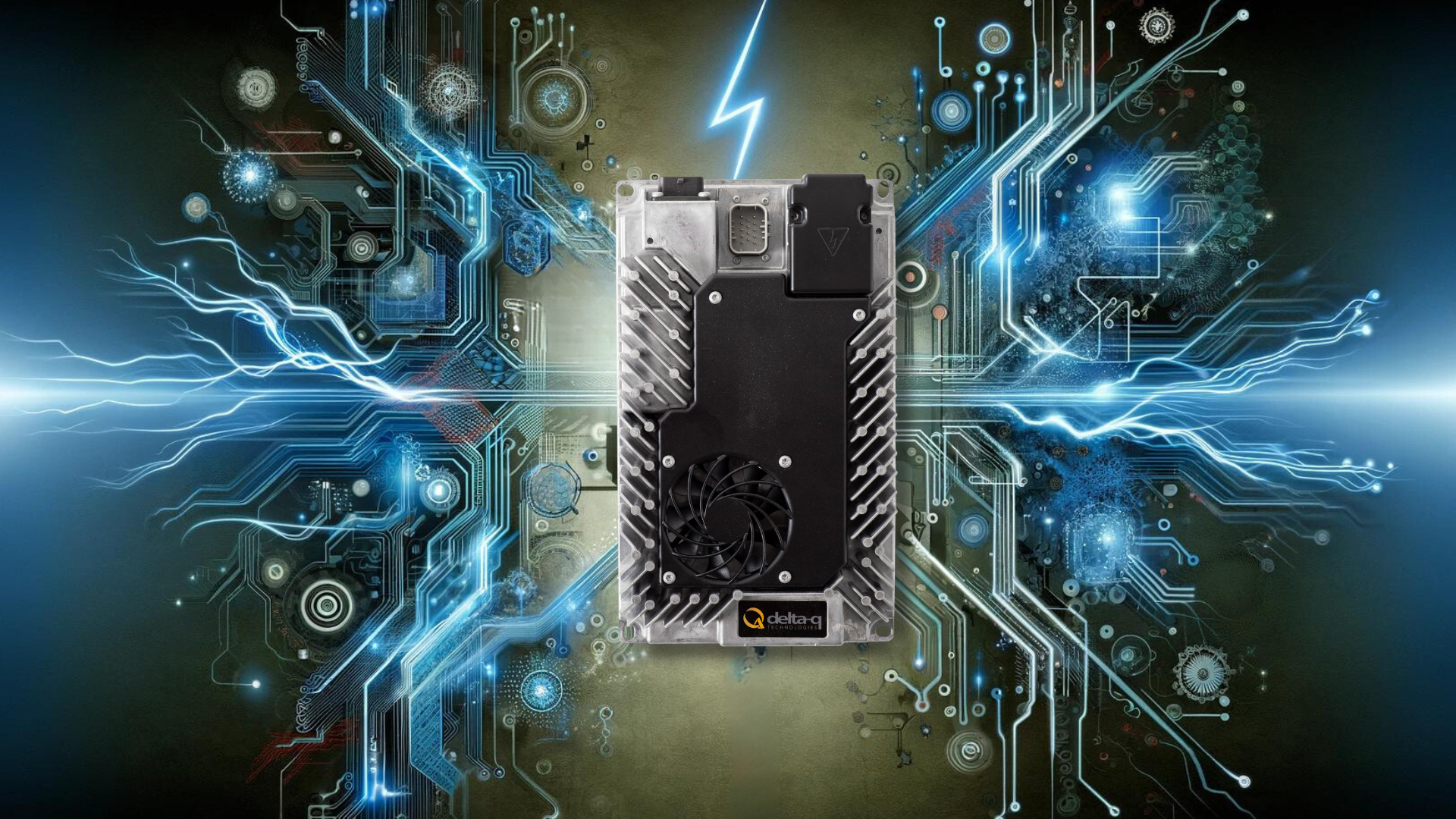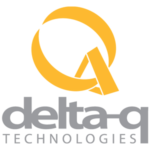The Evolution and Future of Battery Charging Technology
As we charge towards an all-electric future, few technologies wield as much transformative power as battery charging systems. Today, such systems continue their rise from rudimentary designs to cutting-edge marvels.
Chris Botting, the Manager of Research Engineering at Delta-Q Technologies, offers a deep dive into electric evolution in his webinar: The Evolution and Future of Battery Charging Technology.
He pinpoints the seismic shifts, challenges, and solutions that are redefining industries and how Delta-Q intends to cement its role in the future of electrification.
Historical Trends: The Golf Car Case Study
In the decades between the 1960s and the 1990s, battery charging technology witnessed incremental changes rather than groundbreaking innovations. Chargers typically featured a similar construction, predominantly composed of many kilograms of steel and copper
While functional, these units were plagued with efficiency issues. Their unsealed, heavy, and cumbersome design made them unsuitable for onboard and mobility applications.
These were the same challenges—and opportunities—that Delta-Q Technologies encountered upon entering into the market.
Delta-Q Technologies Early Charging Solutions
Leading from the front in high-frequency, switch-mode power supplies, it was in the early 2000s that Delta-Q introduced its first product: The QuiQ Series chargers. These brought a marked improvement in efficiency, with features such as:
- An impressive 1000x frequency boost from 60 hertz to 60 kilohertz
- Transformers that were 30x smaller and lighter
- Approximately 50% reduction in charger efficiency losses
The QuiQ Series also featured an enclosure sealed against fluids and dust, a reliable user interface, and precise microprocessor control to tailor the charging process for each battery make and model.
The next decade once again saw Delta-Q at the forefront, with the golf car market undergoing a revamp and adoption of Design for Manufacturing (DFM) principles. Introduced in 2013, Delta-Q Technologies’ IC650 charger set a new industry standard as the first high-reliability industrial battery charger with a die-cast aluminum enclosure designed to withstand mechanical shock, drop, and vibration.
The Lithium-Ion Revolution
The 2020s marked a pivotal transition driven by advancements in battery technology—notably the adoption of lithium-ion in electric vehicles. By 2023, the ripple effects of the lithium-ion paradigm were evident across multiple industries. A significant catalyst behind its widespread adoption was its superior scalability compared to its predecessor, the lead-acid battery.
The magnitude of its advantages becomes evident when we delve into the numbers:
- Energy density – Modern electric vehicle lithium-ion battery packs boast an energy density of 450 Wh/L. When contrasted with the 70 Wh/L offered by lead-acid batteries, we see a remarkable 500% surge in energy density.
- Additionally, considering the 700% growth in energy density compared to the first generation of EV lithium-ion battery packs in 2008, it’s evident there is still untapped potential.
- Cost dynamics – On the cost front, lithium-ion demonstrates an encouraging trajectory. As adjusted for specific industry applications and production volumes, consider the average cost of lithium-ion battery packs:
- $1,000/kWhr in 2011
- $150/kWhr in 2022
- Although supply chain disruptions have tempered this decline, historical data signals a convergence with the $100/kWhr mark typical of lead-acid batteries
- Charging capabilities – Lead acid risks permanent capacity degradation and reduced lifespan if not fully recharged. Lithium is superior in almost every aspect of charging, being faster and more efficient (less energy loss). This edge is underscored by typical charging durations:
- Flooded lead acid: 8 hours minimum
- Sealed lead acid: 3-4 hours minimum
- Lithium: Less than 1 hour is achievable
With the advent of affordable, high-efficiency lithium-ion batteries where charge acceptance isn’t a constraining factor, the spotlight pivots back to optimizing the charging devices themselves.
Modern Charging Challenges
As advancements in battery technology precipitate the need for evolved charging mechanisms to match pace, new bottlenecks emerge:
- AC supply – At the fundamental level, the first constraint lies in where you plug in to get power. Beyond the limits of residential outlets (1.2 kW in the Americas, 2 kW in Europe), industrial plugs support up to 7 kW. This can further be increased by 3-phase power, achieving up to 22 kW, but there are inherent limitations beyond this.
- DC current – Challenges stemming from conduction loss, inherent resistance, and overheating within DC current pathways must be carefully managed. Adding more copper and cooling help with mitigation, but only to a certain degree. Efforts to tackle this issue increasingly focus on increasing the DC voltage.
- Onboard charger dimensions – With industries demanding more power within a constrained space, charger size becomes a critical factor. The resolution to this lies in the enhancement of power density.
These seemingly distinct obstacles all share a common theme; for each solution, there are multilayered complications. To properly meet these challenges thus demands a multifaceted approach.
Future Charging Trends
Just as historical charging challenges from the early 2000s provided valuable foresight into subsequent developments, by analyzing the challenges of today, we can anticipate the trends of tomorrow. Consider the diverse solutions Delta-Q Technologies is already leveraging in its mission to charge an all-electric future:
- Employing soft switching – By reducing the energy losses and electromagnetic interference typical of hard switching, soft switching can markedly boost the charging systems’ efficiency and performance.
- Replacing diodes with active AC-DC rectification – Though essential in traditional charging designs, diodes introduce fixed forward voltage losses. Replacing diodes with active semiconductor switches, or removing them entirely with bridgeless converter topologies, can slash rectification losses.
- Harnessing GaN and SiC for accelerated switching – The integration of Gallium Nitride (GaN) and Silicon Carbide (SiC) enables faster switching and lower switching losses in power electronics. This innovation enables shrinking of passive magnetic components and heatsinks, contributing to a more compact charge system.
- Implementing advanced cooling mechanisms – The deployment of sophisticated cooling methods, whether passive, fan-driven, or liquid-based, maintains component temperatures within ideal ranges, thus maximizing efficiency and extending the device’s lifespan.
- Adopting denser construction principles – By optimizing space within the charger’s design, both horizontally and vertically, power density can be augmented without expanding the physical charger. This approach requires precise engineering to keep components well-protected and insulated.
- Leveraging system integration to simplify design – Integrated systems can decrease system cost and complexity, by removing components, interconnections, and assembly steps. The charger can be integrated with a DC-DC converter for powering auxiliary loads. Integrating communications with offboard DC fast charging stations simplifies the overall charging process, and supports “right-sizing” the footprint of the onboard charger with a hybrid of AC and DC charging.
As battery charging technology continues to advance, these strategies are poised to serve as the foundational pillars for the development of the next wave of cutting-edge charging solutions.
Charging Forward: Key Insights
From the modest advances of the 1960s to today’s advancements, battery charging tech has come a long way, with lithium-ion shifting the focus from battery limitations to charger enhancements.
Tackling today’s challenges demands multi-pronged tactics: from harnessing energy efficiency and soft switching to leveraging cutting-edge materials like GaN and SiC and honing construction techniques.
Such an all-encompassing approach, rooted in system integration and innovation, paves the way for tomorrow’s chargers—more potent, proficient, and in lockstep with the future of electrification.





